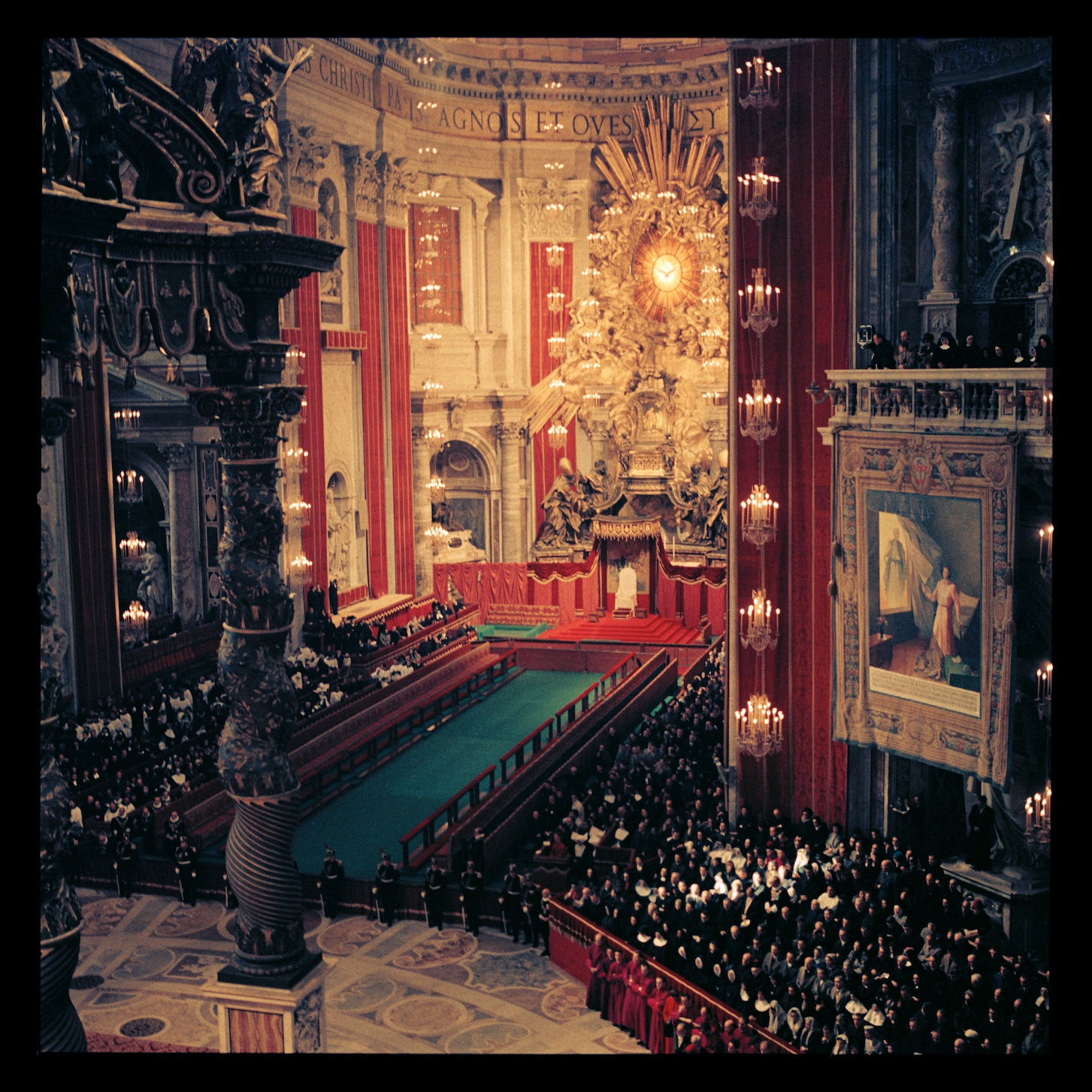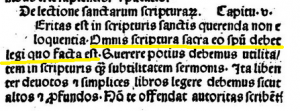Normally I’m focused on the intricacies of Bible translation, but sometimes closely related translation problems crop up. One that I stumbled across made me smile. It has to do with how a now-disfavored term is translated in the premier document of the Second Vatican Council, the Dogmatic Constitution on the Church Lumen Gentium, paragraph #2.
The Latin

Lothar Wolleh, CC BY-SA 3.0 <https://creativecommons.org/licenses/by-sa/3.0>, via Wikimedia Commons
Just so we are all on the same page, the Latin of the crucial sentence reads:
Credentes autem in Christum convocare statuit in sancta Ecclesia, quae iam ab origine mundi praefigurata, in historia populi Israel ac foedere antiquo mirabiliter praeparata(1), in novissimis temporibus constituta, effuso Spiritu est manifestata, et in fine saeculorum gloriose consummabitur.
The Translations
The translation of the relevant section presented in the English Catechism of the Catholic Church, 2nd ed, sec. 759. reads:
…already present in figure at the beginning of the world, this Church was prepared in marvellous fashion in the history of the people of Israel and the old Alliance.
Some sites contain what must be the text of the first edition of the English Catechism and strangely read:
…already present in figure at the beginning of the world, this Church was prepared in marvellous fashion in the history of the people of Israel and the old Advance. (here, here too)
Analyzing the Latin Terms
The typical Latin phrase for “Old Testament” is Vetus Testamentum, whereas the typical Latin term for “Old Covenant” is Foedus Vetus (see Catechism 121). So it is true that the composers of Lumen Gentium–ok, likely not the Council Fathers themselves here, but the Latinist periti that were helping them at the Council–served up a non-standard phrase in foedere antiquo. “Foedus, foederis” is a noun which could mean “treaty, alliance, league, compact, etc.” Fair enough, it is the typical term for covenant. But why antiquo? Perhaps it is meant to have a more nostalgic ring than mere “vetus.” Antiquo could mean “of old, antique, of the ancients, of olden times.”
A Better Translation
It does seem to me that Vatican translators have caught this one and thought the “old Advance” does not mean much to English readers. However, I did find one instance of St. John Paul II talking about the “Old Alliance” from a 1986 General Audience. In the present English text of Lumen Gentium on the Vatican website, we get a better rendering:
Already from the beginning of the world the foreshadowing of the Church took place. It was prepared in a remarkable way throughout the history of the people of Israel and by means of the Old Covenant.
That sounds better to my ears! But it is true that “Old Covenant” and “Old Testament” too have become disfavored as seemingly supportive of supercessionist frameworks. However, to my mind they are simply conventional terms by this point without much charge to them at all.
Conclusion
If we wanted to really parse the difference between foedus vetus and foedere antiquo, then perhaps we could try “the covenant of old” as a kind of nostalgic translation of a Latin phrase that an unknown peritus typed on his Olivetti portable typewriter late at night in his hotel room between sessions of the Council. I was only able to find the phrase in Lumen Gentium and in Livy. Perhaps I’m missing a nuance, but that’s what the comment section is for.

